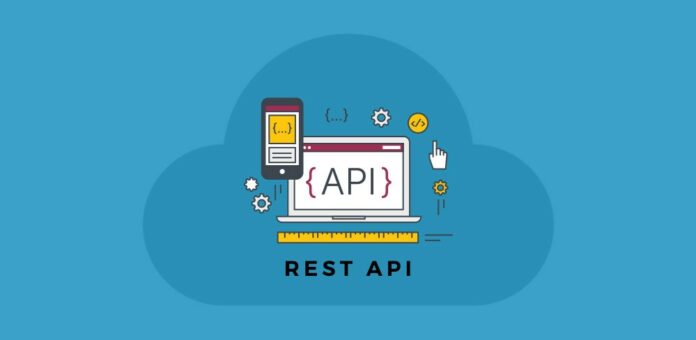A REST API (also known as a RESTful API) is an application programming interface (API or web API) that conforms to the constraints of the REST architectural style and enables interaction with RESTful web services. REST stands for Representational State Transfer and was created by the computer scientist Roy Fielding.
What is an API
An API is a set of definitions and protocols for creating and integrating application software. It is sometimes known as a contract between an information provider and an information user, which establishes the content required by the consumer (the call) and the content required by the producer (the response). For example, the API design for a weather service might specify that the user provides a zip code and the producer responds with a 2-part response, the first being high temperature and the second being low temperature.
In other words, if you want to interact with a computer or system to retrieve information or perform a function, an API helps you communicate what you want to that system so that it can understand and fulfill the request.
You can think of an API as a mediator between users or clients and the resources or web services they want to obtain. It is also a way for an organization to share resources and information while maintaining security, control, and authentication, which determines who has access to what.
Another advantage of an API is that you don't need to know the details of caching: how your resource is retrieved or where it came from.
What is REST
REST is a set of architectural constraints, not a protocol or standard. API developers can implement REST in a variety of ways.
When a client request is made through a RESTful API, it passes a representation of the state of the resource to the requestor or endpoint. This information, or representation, is delivered in one of several formats over HTTP: JSON (Javascript Object Notation), HTML, XLT, Python, PHP, or plain text. JSON is the most popular file format in general because, despite its name, it is language independent and is readable by both humans and machines.
Something else to note: headers and parameters are also important in the HTTP methods of a RESTful API HTTP request as they contain important identifying information in terms of request metadata, authorization, uniform identifier (URI), caching, cookies and more. There are request headers and response headers, each with its own HTTP connection information and status codes.
For an API to be considered RESTful, it must meet these criteria:
- A client-server architecture made up of clients, servers, and resources, with requests handled over HTTP.
- Stateless client-server communication, which means that no client information is stored between get requests and each request is independent and not connected.
- Caching data that streamlines client-server interactions.
- A uniform interface between components so that information is transferred in a standard way. This requires that:
- the requested resources are identifiable and separate from the representations sent to the client.
- Resources can be manipulated by the client through the representation they receive because the representation contains enough information to do so.
- self-describing messages returned to the client have enough information to describe how the client should process them.
- hypertext/hypermedia is available, which means that after accessing a resource, the client should be able to use hyperlinks to find all other currently available actions that it can take.
- A layered system that organizes each type of server (those responsible for security, load balancing, etc.) implies the retrieval of the requested information in hierarchies, invisible to the client.
- Code on Demand (optional): The ability to send executable code from the server to the client when requested, extending the functionality of the client.
Although the REST API has these criteria to meet, it is still considered easier to use than a prescribed protocol like SOAP (Simple Object Access Protocol), which has specific requirements like XML messaging and built-in security and transaction compliance that make it easier to use. slow and heavier.
In contrast, REST is a set of guidelines that can be implemented as needed, making REST APIs faster and lighter, with greater scalability, perfect for Internet of Things (IoT) and software development. mobile apps.




